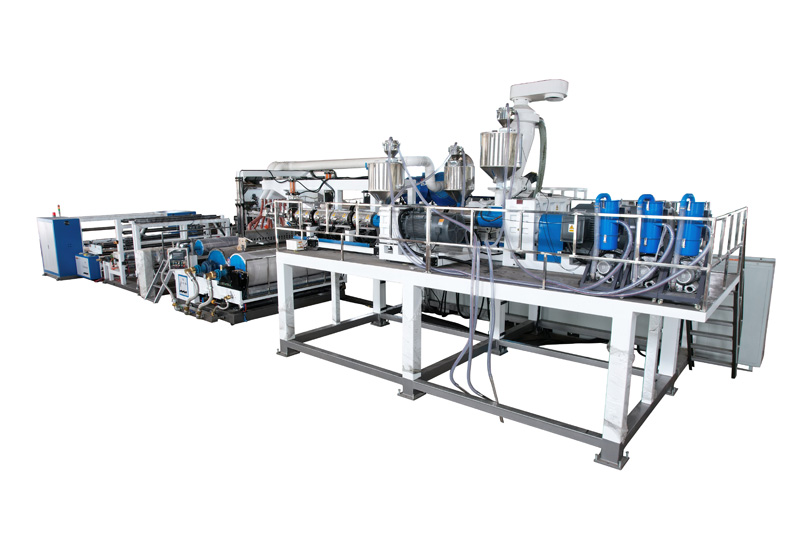Historical Development of Cast Film Machinery
The evolution of cast film machinery is intrinsically linked to the growing demand for flexible packaging materials. Early machines were simple and often manually operated. However, as the industry progressed, technological advancements led to the development of more sophisticated and automated systems.
Key milestones in the development of cast film machinery include:
Industrial Revolution: The advent of steam power and mechanical engineering laid the foundation for the industrial production of plastic films.
Post-World War II Era: The rapid growth of the plastics industry spurred the development of extrusion technology, leading to the emergence of cast film extrusion lines.
Modern Era: Continuous advancements in automation, control systems, and materials science have led to highly efficient and versatile cast film extrusion lines.
The Cast Film Extrusion Process
The cast film extrusion process involves several key steps:
Polymer Feeding: Granular plastic resin is fed into a hopper and conveyed to the extruder.
Extrusion: The resin is melted and homogenized in the extruder, forming a molten polymer stream.
Die Head: The molten polymer is shaped into a thin film as it exits the die head.
Chill Roll: The film is cooled and solidified on a highly polished chill roll.
Wind-up: The solidified film is wound onto a roll for further processing or packaging.
Materials Used in Cast Film Machinery
The materials used in cast film machinery are carefully selected to ensure durability, precision, and efficiency. Common materials include:
Stainless Steel: Used extensively in components that come into contact with the molten polymer, as it is corrosion-resistant and can withstand high temperatures.
Carbon Steel: Used for structural components, such as frames and supports.
High-Temperature Alloys: Used in critical components, such as screw and barrel, to withstand high temperatures and pressures.
Non-Stick Coatings: Applied to the chill roll to prevent film adhesion and ensure smooth film production.
Electrical and Control Components: Used to automate and control the extrusion process.
A complete cast film extrusion line comprises several key mechanical components:
Extruder: Melts and homogenizes the polymer.
Die Head: Shapes the molten polymer into a film.
Chill Roll: Cools and solidifies the film.
Wind-up System: Winds the film onto rolls.
Gearboxes: Transmit power and torque to various components.
Pumps: Circulate cooling water and other fluids.
Motors: Provide power to drive the various components.
Control Panel: Monitors and controls the entire extrusion process.
Our Expertise: Baijia Mechanical Equipment (Huizhou) Co., Ltd
Baijia Mechanical Equipment (Huizhou) Co., Ltd is a leading manufacturer of cast film machinery. Our machines are renowned for their reliability, efficiency, and high-quality output. With a strong focus on innovation and customer satisfaction, we offer a wide range of cast film extrusion lines tailored to meet the diverse needs of our clients.
Diverse Solutions for Advanced Film Production
Our product lineup includes specialized equipment such as:
Functional Cast Film Machine: Designed to produce films with specific properties such as barrier protection, stretchability, and durability, meeting the demands of various industrial applications. Multi-layer Cast Film Line: Capable of producing multi-layer films that offer enhanced properties like increased strength and improved barrier performance, suitable for complex packaging requirements.
Contact Us Today
We are committed to providing our customers with the highest quality products and services. Our team of experts can help you select the optimal configuration for your specific needs and provide ongoing support to ensure smooth operation. Contact us today to learn more about how our cast film extrusion lines, can elevate your film production process.




